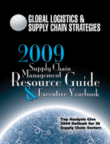
Visit Our Sponsors |
|
|
|
|
|
|
|
|
|
|
|
|
|
|
|
|
|
|
|
|
|
|
|
|
|
|
|
|
|
|
|
|
|
|
|
|
|
|
|
|
|
|
|
|
|
|
|
|
|
|
|
|
|
|
|
|
|
|
|

High-tech industries are showing a higher percentage of companies that indicate they have completed a redesign of their domestic and international supply chains. This indicates that they are ahead of the curve in terms of supply chain transformation based on the key pressures being faced in the marketplace. The top three pressures faced by the high-tech industries are: the need to contain supply chain costs to remain cost competitive (68 percent); demands to manage a more global business (44 percent); and the escalation of customer service demands (41 percent).
Some of the key business conditions faced by high-tech industries are:
• Centralization of supply chain organizations. Forty-six percent of high-tech companies indicate that their supply chain organizations are centralized. Best-in-Class companies are evolving from multinational to global companies through centralization of their supply chain organizations and are bringing procurement and order fulfillment into the fold with the supply chain planning organizations.
• Response management-beyond visibility. Forty-six percent of high-tech companies indicate that they have end-to-end supply chain data and process visibility. The greatest financial value comes from leveraging visibility information to identify and eliminate root causes of delays or other production issues and to rapidly respond to changes that could negatively impact the business if mismanaged or left unattended. Effective supply chain response management reduces lead times and variability, enables lower inventory investment, improves customer satisfaction and revenue attainment, and cuts supply chain costs.
• Sales and operations planning. Fifty-four percent of high-tech companies indicate that they have an executive position with end-to-end supply chain responsibility. High-tech companies are continuing to make headway in the S&OP process.
The Outlook
The following are actions that high-tech manufacturers have to take in order to succeed in 2009:
• Extend supply chain visibility. Ramp up the use of global supply chain visibility analytic tools. Best-in-Class are more than twice as likely as Industry Average companies to be performing various analyses, including tracking total landed costs, conducting root cause and trade lane analysis, and traceability/genealogy analysis at the item level.
• Implement S&OP process with closed loop integration with execution. Seventy-one percent of Best-in-Class companies have a continuous monitoring of the S&OP output to ensure plan quality versus 20 percent of Laggard companies. The ability to measure and monitor the performance of their S&OP plans is a clear differentiator for Best-in-Class companies.
• Create a globally integrated supply chain organization. Thirty-eight percent of Industry Average companies indicate that they have a centralized supply chain management organization versus 67 percent of all others. No longer can companies run different supply chains for different products within the same business units. Consolidation and rationalization of business processes within the supply chain organizations is a necessity that has to be embraced.
RELATED CONTENT
RELATED VIDEOS
Timely, incisive articles delivered directly to your inbox.


